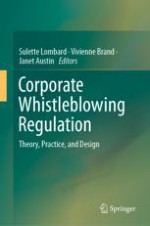2020 | OriginalPaper | Buchkapitel
8. Directors Dealing with Whistleblowing
verfasst von : Greg Golding
Erschienen in: Corporate Whistleblowing Regulation
Verlag: Springer Singapore
Aktivieren Sie unsere intelligente Suche, um passende Fachinhalte oder Patente zu finden.
Wählen Sie Textabschnitte aus um mit Künstlicher Intelligenz passenden Patente zu finden. powered by
Markieren Sie Textabschnitte, um KI-gestützt weitere passende Inhalte zu finden. powered by
